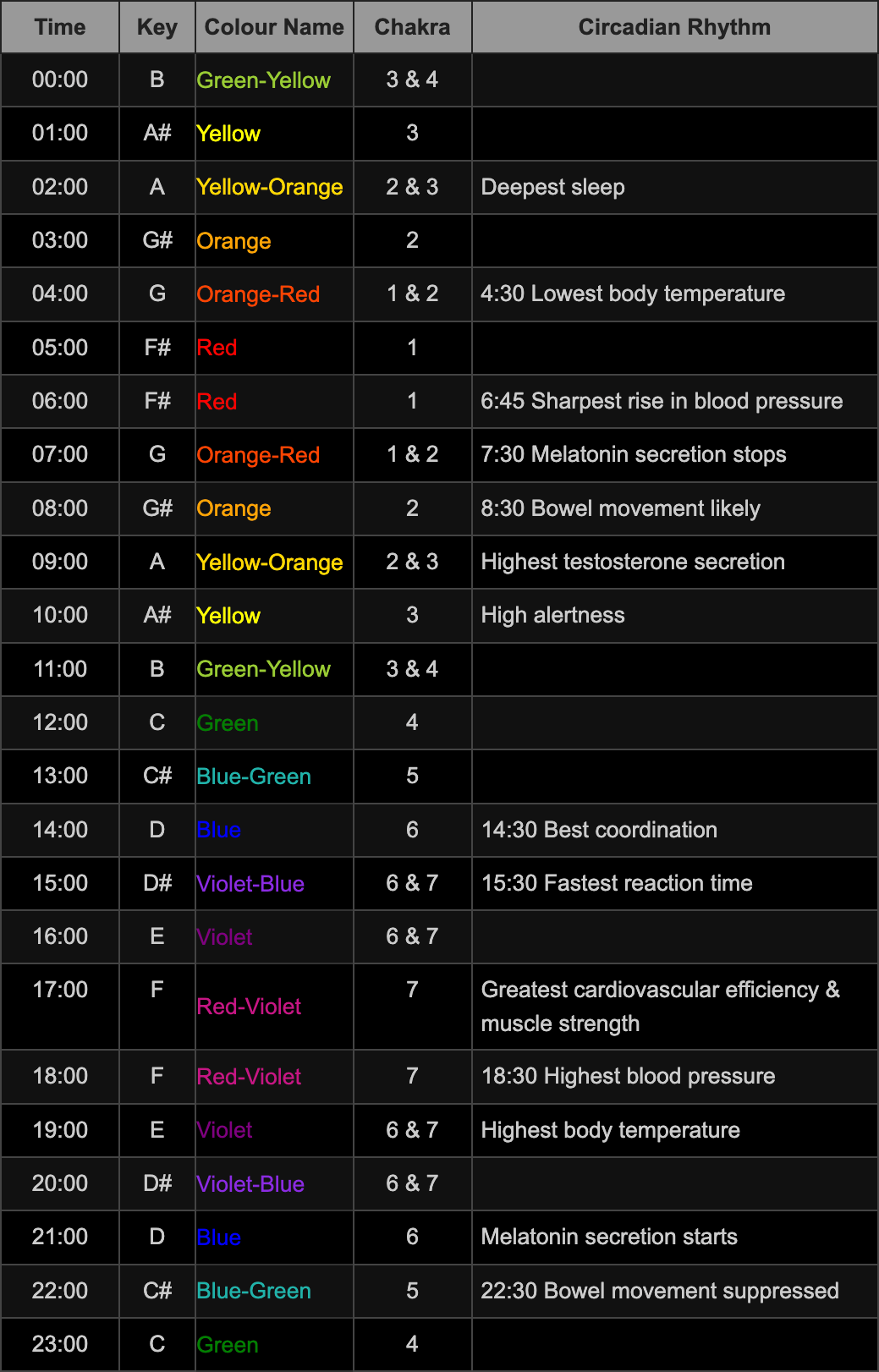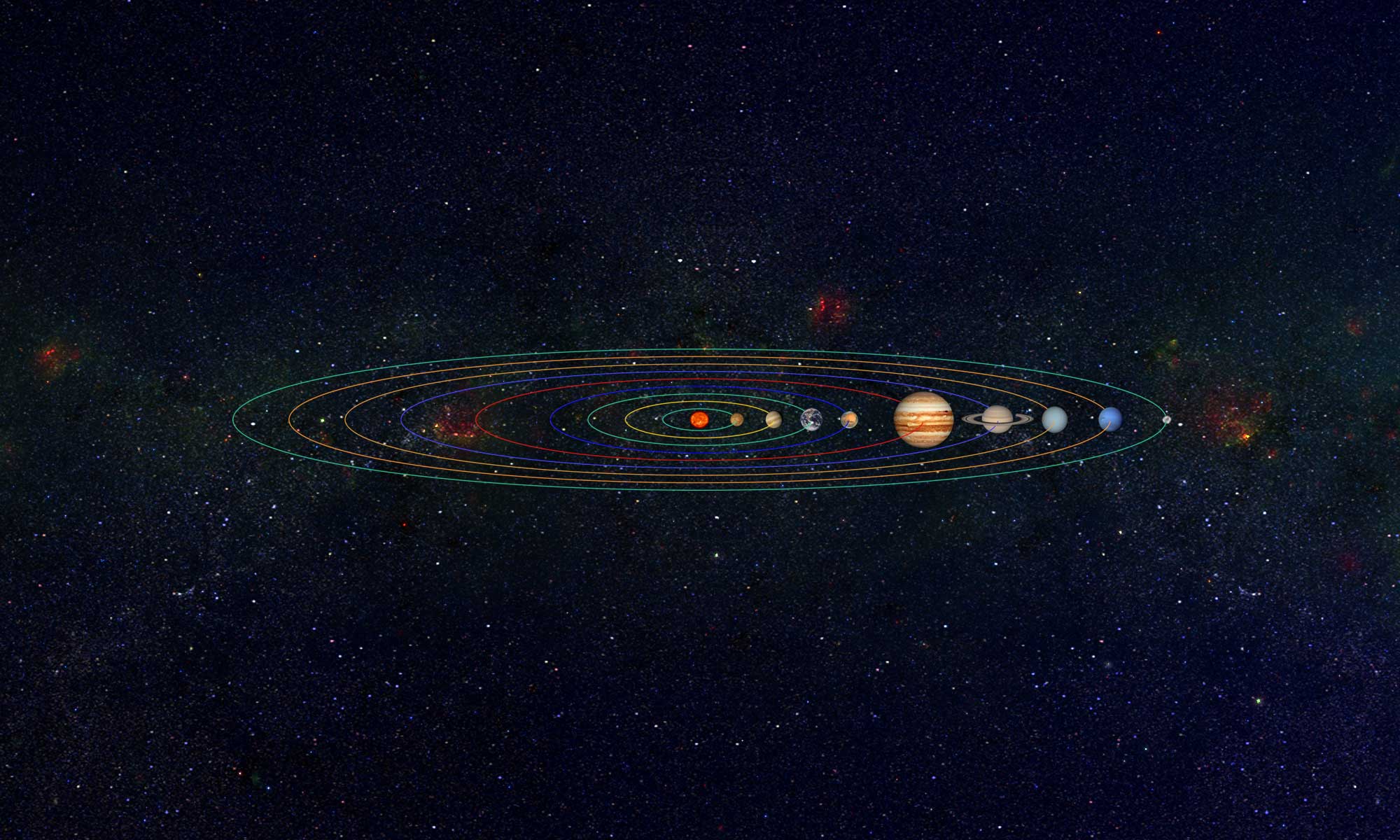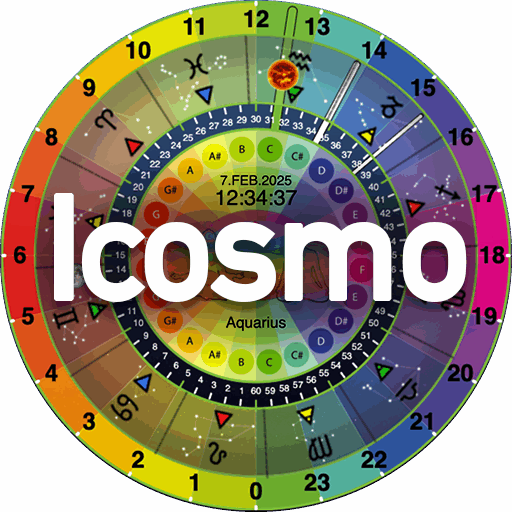The Icosmo idea is to cross-connect systems from scientific, artistic, social, and spiritual sectors.
Systems have things in common; they are all part of actuality. Some are ancient, some are young, and they all share a common downside, too. They are isolated systems, which try to explain or organise actuality, but actuality is the sum of all systems.
This is where Icosmo comes in, and by creating the Icosmo Matrix, we started the process to incorporate a growing number of systems, which are all interconnected.

Basics of the Icosmo Matrix
The Icosmo Matrix illustrates the relationships between each hour of the day, chromatic key, colour name, and Chakra.
The visible spectrum commences with the colour Red and concludes with Red-Violet. Daybreak marks the inception of the day, where we incorporate the initial visible colour into the sunrise hours.
The colour Red, with a wavelength of approximately 736 nanometers, resides in the middle and corresponds to the lower octave of the chromatic key F#.
As dusk falls, signalling the transition from day to night, we arrive at the final colour of the visible spectrum, Red-Violet, alongside the chromatic key F. Throughout the night, the system mirrors itself, culminating in Red and completing the cycle.
This methodology enables us to correlate colours, chromatic keys, and Chakras to each hour of the day. Additionally, we added to the Icosmo Matrix table a column with the so-called Circadian Rhythms*.
For demonstration purposes, we offer a simplified rendition of our established Icosmo Matrix. Over time, the Icosmo Matrix has evolved into a holistic system, revealing connections between various systems that may not initially seem related.
In our universe, interconnectedness pervades every aspect, and our Icosmo Matrix serves to visualize and leverage such relationships for a diverse range of practical applications.
* Circadian Rhythm (Wikipedia):
A circadian rhythm (/sərˈkeɪdiən/), or circadian cycle, is a natural oscillation that repeats roughly every 24 hours. Circadian rhythms can refer to any process that originates within an organism (i.e., endogenous) and responds to the environment (is entrained by the environment). Circadian rhythms are regulated by a circadian clock whose primary function is to rhythmically coordinate biological processes so they occur at the correct time to maximise the fitness of an individual. Circadian rhythms have been widely observed in animals, plants, fungi and cyanobacteria and there is evidence that they evolved independently in each of these kingdoms of life.

